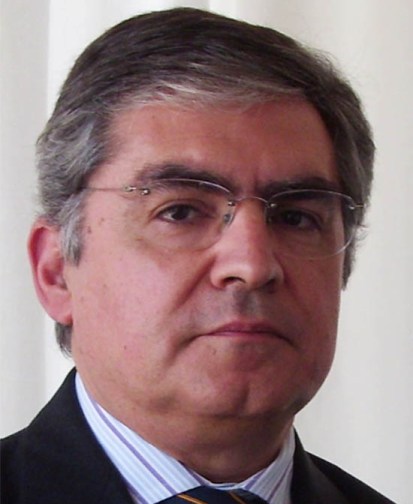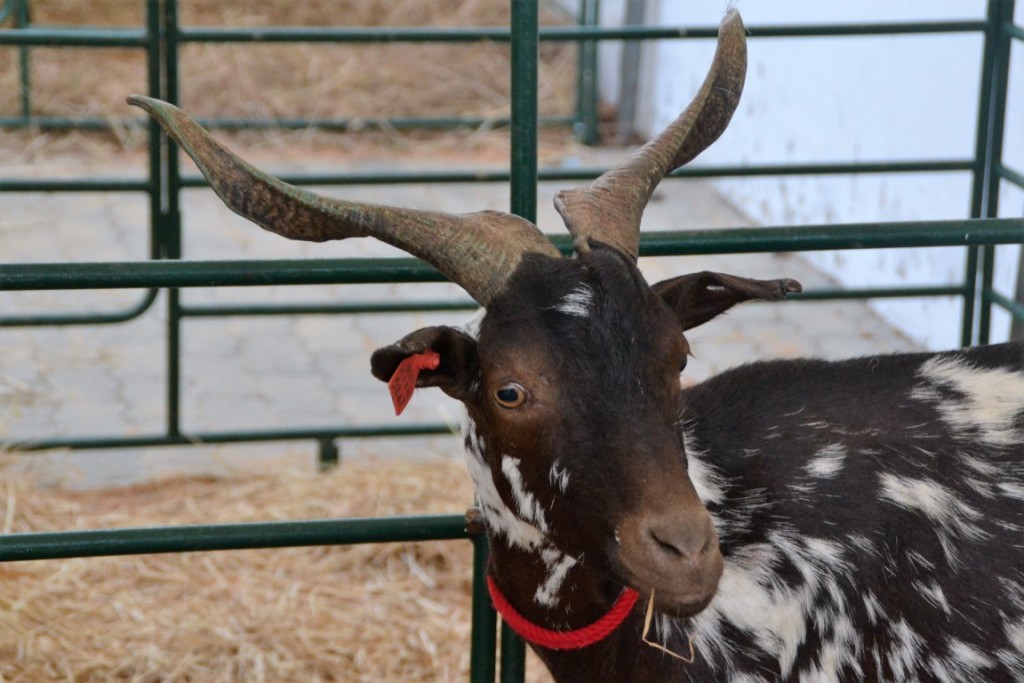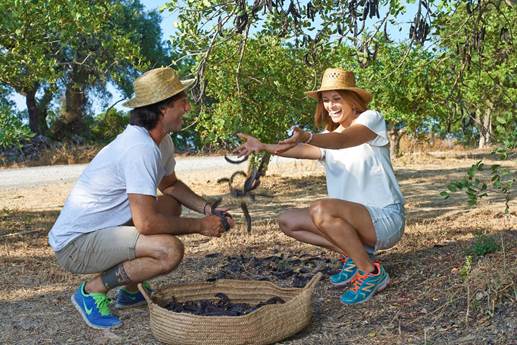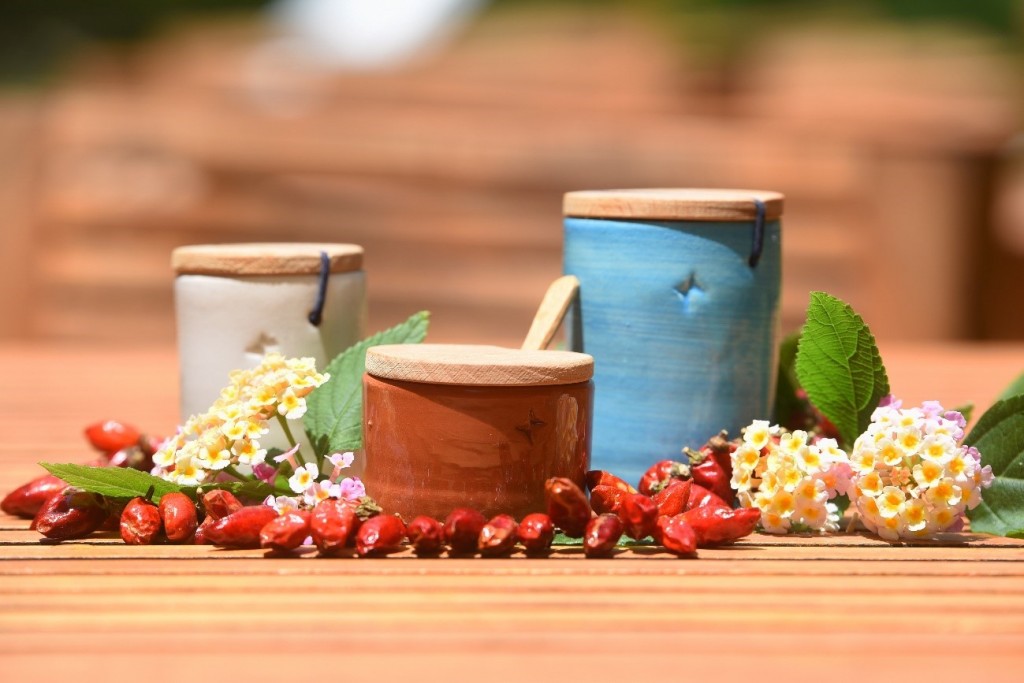 We return to the theme of the Mediterranean diet to address the appreciation of the local economy and, in particular, the traditional rural Algarve.
We return to the theme of the Mediterranean diet to address the appreciation of the local economy and, in particular, the traditional rural Algarve.
As an example, let's think about the value chain of the Algarve goat and the tasks that this option entails, always from a perspective of valuing local economies and their most sensitive ecosystems, where the Algarve goat has its preferred ecological niche (who says goat says honey, arbutus, wild berries, traditional dryland orchard, citrus fruit, flowers, mushrooms, cork, game, etc.).
I. The formation of the Algarve goat value chain
Let's see, on a more operational level, and as a first approximation, how the formation of the Algarve goat value chain can be done:
– Firstly, it is a question of bringing together the producers of the indigenous breed of the Algarve goat, with a view to discovering and enhancing the local biodiversity of the species and its ecological niche;
– Secondly, it is a question of organizing technical, associative and public assistance, in line with a more agroecological and ecosystemic approach;
– Thirdly, it is about rejuvenating the social capital involved, whether at the family level of the producers, or by inviting “new entries” to the grouping;
– Fourthly, it is about improving the production process, extending the functions of the value chain and adding its “internalities or circularities” (circular economy) in order to reduce its internal transaction costs: race, pasture, biodiversity, scrub cleaning, composting, etc.;
– Fifthly, it is about diversifying the “end product line” of the Algarve goat and diversifying the target markets through smarter marketing and marketing;
– Finally, it is about capitalizing the production chain and articulating the Algarve goat value chain with the forestry exploitation of the ZIF, thus adding the mass, muscle and nervous system of this local subregional productive system.
II. The principles that guide the local production system
This methodology for the verticalization of the Algarvian goat row will only be entirely successful if, at the same time, we have in hand a project for a network territory under construction, inspired by the principles that support the philosophy of the Mediterranean diet.
This philosophy includes the following areas of work:
– The expansion of the areas of agroecology and organic farming;
– The expansion of creative and cultural activities, from culinary and gastronomic arts, to traditional handicrafts, local materials and arts and crafts workshops;
– Consideration of landscape and land arts associated with nature tourism;
– The development of tourism products and services in the types of health and well-being tourism for senior society;
– The development of activities related to the green economy and circular economy and the arts and pedagogical practices of the 4R, (reduction, recycling, repair and reuse);
– The promotion of leisure and recreation arts, pedagogical, recreational and therapeutic spaces, for example, for senior society, including holiday camps and senior residences;
– The development of multimedia and performing arts and the creation of artistic and cultural residencies, as well as events linked to local history, oral literature, poetry, literary landscapes, etc..
All these activities can and should be the object of a “territorial convention” that will become the “fundamental law” of the social construction of the future network-territory. A promoting committee can be the instigator of this construction project.
III. Set up a line of "structured products and services"
The verticalization of an economic activity along a row or value chain must be crossed and complemented with a network of horizontally reticulated activities, in such a way that, from these crossings and this mesh, we can derive a new territorial intelligence and, from it, , to design a new basket of “structured products and services” that we can identify with a new, more contemporary and cosmopolitan image of the region.
We are talking about a denser network and capillarity, where the composition of traditional economic activities intersects with creative and cultural activities and tourist visits as a link between them all.
As an illustration, let's see how this tighter mesh and this denser capillarity could be organized in a region like the Algarve and in a sub-region like the traditional rural Algarve.
Let's list the traditional arts and think about what could be done with some small innovations introduced in these activities, in such a way that, based on them, we could structure and build a network territory and a network economy and tourist visitation:
1. The arts of grazing the Algarvian goat;
2. The arts of traditional Algarve linen/cheesemaking;
3. The arts of drawing cork;
4. The arts of retailing and olive picking;
5. The arts of retailing and harvesting carob and almond;
6. The arts of beekeeping and honey production and the transhumance of bees;
7. The arts of treading the grapes on foot;
8. The arts of arbutus distillation;
9. The arts of prickly pears;
10. The arts of collecting mycological products;
11. The arts associated with pruning and grafting;
12. The arts associated with traditional cosmetics;
13. The arts associated with aromatic herbs;
14. The arts associated with medicinal herbs;
15. The arts of basketry and pottery;
16. The arts associated with edible flowers;
17. The arts associated with artisanal fishing;
18. The arts associated with hunting and hunting;
19. The arts of traditional confectionery and confectionery;
20. The arts associated with traditional cooking;
Let's imagine, now, the mapping of these activities in the network territory under construction and the diversity of “structured products and services” that it would be possible to carry out from the combination and crossing of all these activities.
As an example, we point out some innovations in terms of design of product, obtained by crossing the vertical rows of production and the horizontal rows of visitation and consumption, here designated as “one day in”:
– A day in the Algarvian mountain forest: picking wild fruits and distilling arbutus, combined with mycological tourism and nature trails and the mountain gastronomy of the Mediterranean diet;
– A day in the villages of the Algarve's Barrocal: the harvest of aromatic and medicinal herbs, their preparation and distillation, combined with a visit to the apiary and guided tours of the living and museum heritage of the villages; at night, Mediterranean cuisine and evenings of music and theater in the village;
– A scientific and cultural journey in the Algarve's Barrocal and Serra: guided tours to observe the flora and fauna endemism of the Algarve's Barrocal and Serra, combined with nature trails, literary landscapes, Mediterranean cuisine and village cultural evenings; it is important to remember that the inventory and the plan to safeguard the Mediterranean diet will oblige the creation of a line of research in this area in particular;
– A day on the hunt: preparation and participation in a hunt, cooking of game products, sessions on nature and wildlife and hunting tourism;
– A day in the Ria Formosa: fish and bird watching in the Ria Formosa, nature walks along the ria, the ria's gastronomy, sessions on the ria's nature and wildlife and cultural and recreational activities under the ria's pretext;
– A day on the Cork Route: the removal of cork and its industrial transformation, the artistic and decorative arts associated with cork, the products and gastronomy of the cork forest, the picking of edible flowers, the scientific, cultural and recreational sessions associated with mounted multifunctionality;
– A day in the pasture: grazing a herd of native goats, collecting milk and producing artisanal cheese, tasting the cuisine of the Mediterranean diet, attending cultural and recreational sessions associated with the agro-silvo-pastoral system;
– A day in the traditional dryland orchard of the Algarve's barrocal: fig, almond and carob picking, their preparation and processing, the handicraft of traditional sweets, workshops about traditional sweets, the gastronomy of the Mediterranean diet, sessions on local handicrafts;
– A day in the vineyard and in the winery: knowledge of good production practices in the vineyard, the treading of grapes, the winemaking process, waste recycling, by-products, wine tasting and wine tourism, the gastronomy of the diet associated Mediterranean, cultural, technical and scientific sessions related to vineyards and wine;
– A day in the olive grove and in the mill: knowledge of good production practices in the olive grove, olive picking, the transformation process in the press, waste recycling, derived products, olive oil tasting and olive tourism, gastronomy the associated Mediterranean diet, cultural, technical and scientific sessions related to olive groves and olive oil.
These short programs can also be associated with special programs for senior tourism and tourism for groups with reduced mobility and be articulated, for example, with artistic residencies and creative and cultural production (creative and cultural weeks) and also with maintenance and treatment physical education programs adapted to special groups and recreational programs of events and evening shows of fados, theater, chamber music, singing and poetry, film and documentary, table games championships, various competitions, etc..
Final grade
The example of the “TASA” handicraft line (ancestral techniques, current solutions) is a good illustration of this immense field of possibilities, which combines local raw materials and artisan technologies with solutions for design and current communication, which revolutionize commercial and territorial marketing, giving back to territories and local artists a relevance they did not have until then.
The line of products linked to cork, more artisanal or more artistic, and the Cork Route is another excellent example of territorial roots.
If we think of the multiple virtuous associations - technical, technological and cultural - between agricultural production, food engineering, distribution logistics, territorial marketing, design and communication, arts and culture, we will have an immense field of possibilities for the “structured products and services” around the Algarve goat, wild fruits, honey, arbutus, mushrooms, aromatic and medicinal herbs, handmade cosmetics, hunting, citrus fruits, etc., not to mention the universe of “lost seeds”, especially in horticultural area, an amazing world that lies waiting under our feet, waiting for an opportunity.
I am talking about manifestations of collective territorial intelligence that are perfectly within our reach. Then don't complain.
Author António Covas is a full professor at the University of Algarve and a PhD in European Affairs from the Free University of Brussels




















Comments